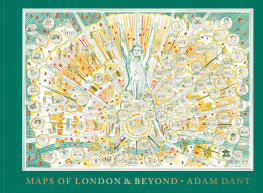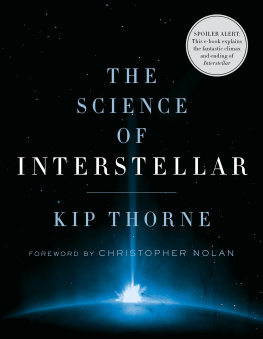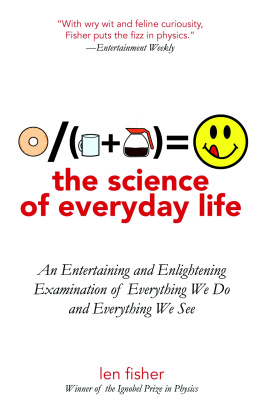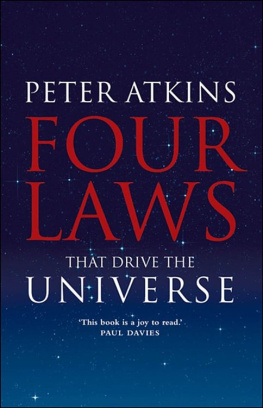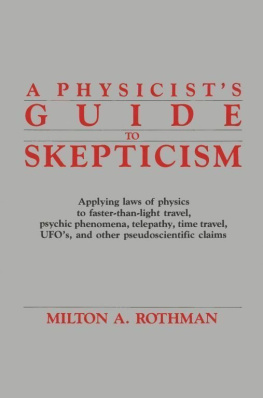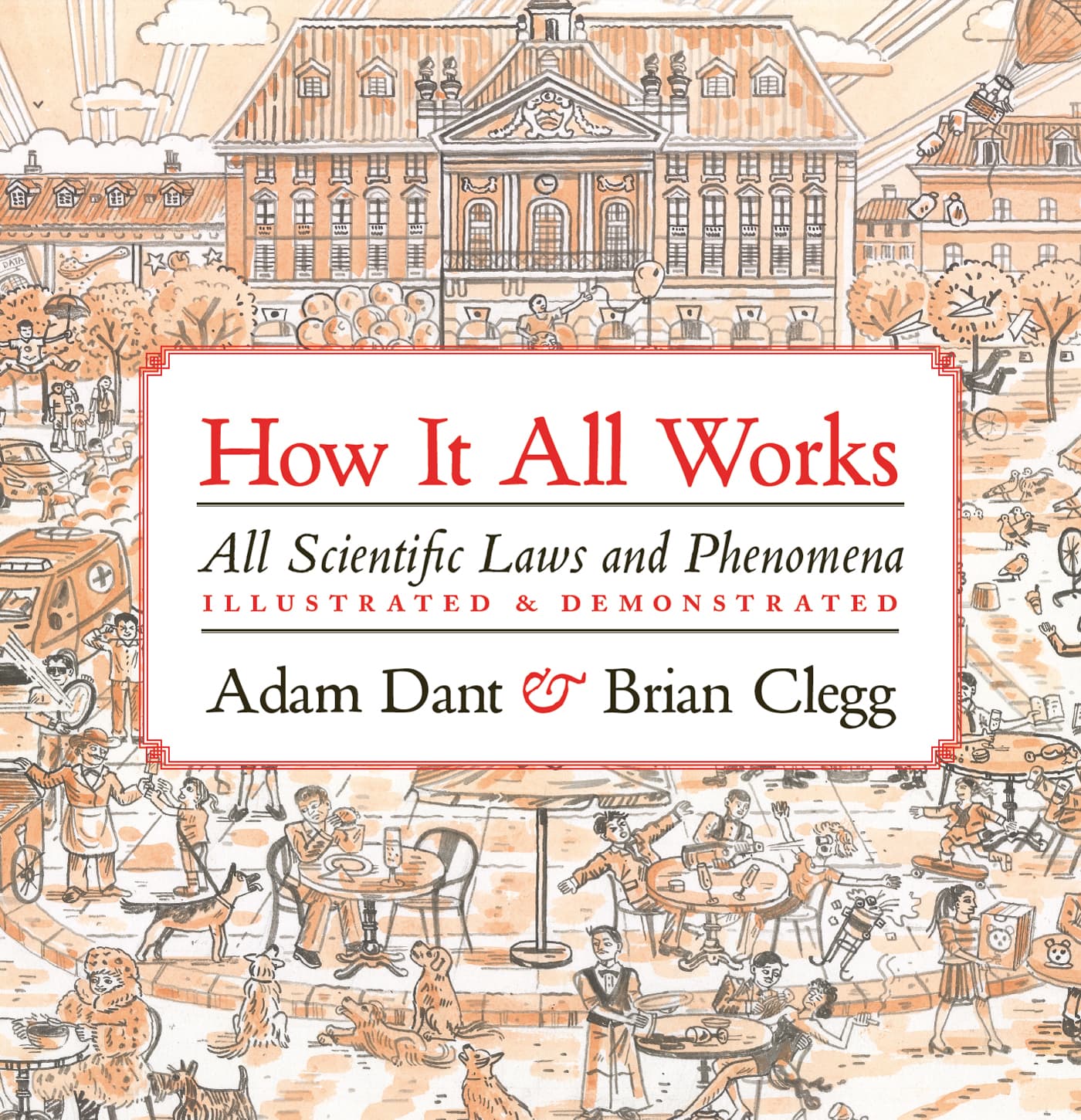CONTENTS
1
The Kitchen
2
The House
3
The Garden
4
The Science Museum
5
The Hospital
6
The Town Square
7
The Street
8
The Countryside
9
The Coastline
10
The Continent
11
The Earth
12
The Solar System
13
The Entire Universe!
Introduction
S cience is the study of how the constituents of the universe work. This could be an abstract pursuit of knowledge for its own sake and that is a worthwhile activity in its own right. But since the development of applied scientific principles, notably in optics, it has also gradually become a practical study that enables us not only to understand how things work, but how to make use of that understanding in the technology that supports our everyday lives.
Laws and phenomena
In Adam Dants magnificent and ever-delightful illustrations we can see a whole host of ways in which scientific laws and phenomena crop up in everything we do. The distinction between laws and phenomena is a subtle one. A phenomenon is something that happens or exists in the universe. It can be anything from an object a star, for example to a mechanism by which something takes place, for example, the way that a fluid flows from place to place, or life itself. Scientific laws, though, are more a way of describing structures that link the different phenomena.
Unlike the human-devised legal system, the universe doesnt have a rulebook where can we look up precisely what to expect in a particular situation. Instead, a scientific law is an attempt to reflect a repeated pattern in nature. The great American physicist Richard Feynman remarked that: There is ... a rhythm and a pattern between the phenomena of nature which is not apparent to the eye, but only to the eye of analysis; and it is these patterns which we call Physical Laws.
What we describe as a law is often a mathematical description of what is expected to happen. Some are the pragmatic result of observation. So, for example, we will meet Kleibers law, which relates the weight of an animal to the amount of energy it consumes. There is no theory here such laws are a way of stating that we have observed a lot of these things, and they usually behave like this. Other laws, notably physical laws, are driven by theory and work consistently within particular limits. So, for example, Newtons laws of motion describe exactly how an object will move as long as it is not moving too quickly.
How the book works
Each of the illustrations in the book covers a particular level in a cosmic zoom that starts with a kitchen and moves outward, step by step through the house, the garden, a science museum, a hospital, a town square, a street, the countryside, the coastline, a continent, planet Earth, the solar system and the universe though thanks to Adams imagination, some of the locations may be unexpected. Within each illustration you will be able to find 46 different laws and phenomena behind the rich play of activities and objects featured the laws are marked L and phenomena with P.
Each item covered is then pulled out as a detail to describe what is being illustrated. Inevitably, there is a limit to the amount of information that can be included in such a short piece of text. As a result, it is sometimes necessary to omit details in what can be a quite complex concept. In most cases, you can find out more by searching for the topic on the internet though its fair to say that in some aspects of, say, quantum physics, even the scientists can struggle to get their head around whats happening. Similarly, its impossible to be comprehensive because of the sheer scale of the ever-changing world of science, but the topics are representative of the scientific landscape at the time of publication.
What these illustrations and their short descriptions will show is the way that in everything we do, in everything we experience, we are witnessing and taking part in scientific phenomena, guided and linked by scientific laws. Science is not just something we do at school or that professionals undertake in laboratories, it is at the heart of how everything works. Samuel Johnson famously commented that when a man is tired of London, he is tired of life. In this book we see how anyone who says that they have no interest in science is also saying they have no interest in life, the universe and everything.
Key figures
At the back of the book, you will find 13 game changers key figures who have had a significant impact on our scientific understanding of how it all works. There is one of these for each section (you will find each of the key figures cropping up in one of the illustrations, where his or her discovery features). Any attempt to nominate a scientific hall of fame is fraught with difficulties. I have tried in selecting these individuals to go for a mix of well-known and more obscure names, but in each case the person has been responsible for giving us a step forward in the understanding of how our universe works.
Because these scientists have given us insights into fundamental laws and phenomena, many of them lived before the twentieth century. There have been vast numbers of scientific breakthroughs since 1900, yet outside of a few areas such as quantum physics and chaos theory, the basics were already established. This does mean that we feature only two women among our 13 key figures. If we were looking at leading scientists in the last 50 years, say, the proportion would be very different. Even before the twentieth century there were many female contributors to scientific knowledge, but because of cultural restrictions in those days, the proportion of women in science was far lower. Thankfully, things have now changed.
The beauty of science
Its possible to enjoy How It All Works on two complementary levels. We have here a wonderful collection of pictures by Adam Dant, demonstrating his mastery of large-scale illustrations with the richness that won him the Jerwood Drawing Prize. However, Adams pictures are more than works of art. When we look deeper, each illustration shows us in a multi-layered fashion how the many aspects of science and technology come together to establish our relationship with the universe we inhabit.
Famously, the nineteenth-century English poet John Keats complained that Newton was guilty of unweaving the rainbow, reducing the beauty of nature to mere mathematics. However, as Adams illustrations show, there is no dividing line between science and beauty. With a scientific understanding we can both appreciate the splendour of nature and get a better feeling for how it all works. And that isnt a bad thing.
Brian Clegg
The Kitchen



